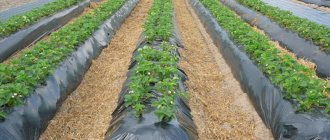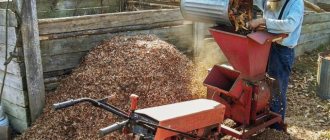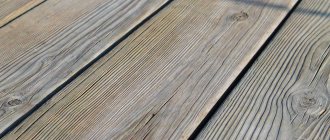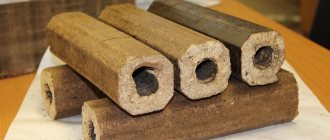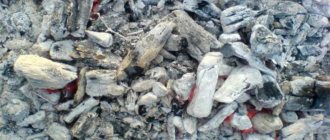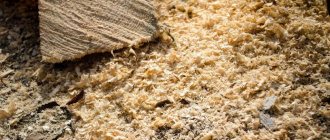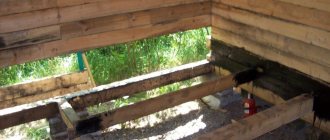Often we don’t appreciate what we have, but sometimes you just have to look around (in our case, go out into the yard) and now you are the happy owner of a universal natural material! Let's talk about using sawdust in the country.
A large amount of sawdust has accumulated on your property, and you don’t know where to put it? We will tell you what to do in such a situation, because sawdust is a multifunctional material. See for yourself!
Sawdust flavoring
Due to its excellent absorbent properties, sawdust can be used as a natural flavoring agent. There are two options on how to do this:
- if you have juniper or pine sawdust, pour it into a fabric bag and tie it tightly with a ribbon;
- Soak sawdust from any tree with essential oil and place it in a jar or bag, tie it or cover it with a lid.
Place sachets with fragrant sawdust in the closet where clothes and linen are stored, or place them in the room.
What raw materials are used as sawdust for fertilizer?
Sawdust is not used in its pure form. They must be pre-prepared before being added to the soil. This material is obtained from different types of trees. Deciduous and coniferous species are used with equal frequency. Coniferous sawdust is more expensive, but it has the property of killing pathogenic bacteria in the soil, so its application is preferable. Pine sawdust is especially useful for plants such as cucumbers, tomatoes, and carrots. It is not recommended to use oak material to obtain sawdust.
Growing mushrooms on sawdust
Did you know that oyster mushrooms can be grown in the most common sawdust? The substrate is prepared from large hardwood sawdust and straw (you can use feed or sunflower seed husks), mixed in a 3:1 ratio. The components must be processed: soak the mass in hot water for 3-7 hours, maintaining a temperature of 60°C.
Then, when the substrate has cooled, it needs to be squeezed out and placed in layers in a thick transparent plastic bag, sprinkling each layer with crushed mycelium. Several small holes are made in the bag. With proper care, mushrooms will grow in 40-45 days.
Properties of wood chips and shavings
Sawdust has been acting as fertilizer for a very long time. This material is valued for the following properties:
- ability to loosen the soil. Not all plants need this effect, but sawdust saturates the soil well with oxygen, maintaining good looseness without additional manipulation;
Sawdust can loosen the soil
- good conductivity of water through the soil with fertilizer;
- low cost and availability;
- natural composition;
- increasing plant fertility.
Only rotted sawdust can be used. Therefore, before using the fertilizer, it is necessary to prepare it by intensively moistening it with compost or humus. Then sawdust will be able to bring only beneficial properties.
Sawdust compost
Sawdust is used as fertilizer for many plants. There is one “but” - fresh sawdust cannot be used, as it will “pull” the nitrogen necessary for crops to grow from the soil. The way out of the situation is to prepare compost from sawdust.
If the compost is “filled” with sawdust, this will speed up its maturation. Sawdust improves the structure of the compost: they make it looser and increase air permeability. Another “plus” is that such compost will warm up faster in the spring. At the beginning of summer, start a compost heap, laying out sawdust (10 kg) in layers. Each layer must be shed with water in which fertilizers are dissolved:
- 130 g urea;
- 10 g superphosphate;
- 70 g potassium chloride.
Also, each layer needs to be sprinkled with lime (150 g of lime will be needed for a pile 1.5 m high). When the compost is ready, it is added to the soil at the rate of 2-3 buckets per 1 sq.m. The optimal time to add compost is late summer.
Which sawdust is better
It is impossible to say for sure which sawdust is best for the garden. Each type has its own properties and is optimally suited for solving certain problems. In addition, there is not much difference between coniferous and deciduous wood waste. In any case, proper use will be beneficial, but violation of technology can significantly harm the soil and plants. At the same time, you need to understand the difference in composition, properties and influence on the soil in order to avoid mistakes.
Coniferous
Coniferous wood waste most often means pine waste, since it is the most common and affordable. Pine is widely used in carpentry and carpentry workshops, so pine sawdust is most often used as fertilizer in the garden or mulch in the garden. Their benefits and application are due to two properties:
- increased rotting time due to the high concentration of resinous substances, which makes them an excellent material for arranging paths, especially in the garden, where annual digging is not required;
- increased content of microelements necessary for plants, which makes them the best option for balanced fertilizer (but only after overheating).
Related article:
What to make from wooden pallets in the country: 5 simple but original ideas
At the same time, improper use of pine or other coniferous shavings is fraught with more serious damage to the soil and plants than deciduous ones.
The damage to coniferous wood is manifested by the following consequences:
- Almost all nitrogen is drawn out of the soil;
- severe acidification of the area occurs.
To neutralize these negative effects, nitrogenous fertilizers and ash or lime solutions must be regularly applied to the beds.
Foliar
Deciduous wood waste has a less nutritious composition than coniferous wood waste. But they overheat faster and have a less pronounced aggressive effect. In terms of availability, such sawdust is also significantly inferior to pine needles, since most furniture factories and carpentry workshops do not work with hardwood or process it in small quantities.
The shortage leads to the fact that private households often use crushed dry branches of garden trees, which may be diseased or infested with pests. Accordingly, the sawdust obtained from them will contain larvae, fungi, and pathogens of other infections, and it cannot be used in the garden.
In general, when choosing sawdust, you should give preference to the one that is easier to find and cheaper to deliver to the garden. In any case, it will need to be combined with organic or mineral fertilizers. The main thing is not to use fresh wood waste where it should be rotted, and also to compensate for the negative impact of wood on the soil. Only an integrated approach will ensure that you get all the potential benefits from such a universal material as sawdust.
Sawdust mulch
This natural material is used to mulch beds, soil under berry bushes, tree trunks, etc. For mulching, you can use semi-rotted or rotted sawdust.
Since fresh sawdust is harmful to plants (they absorb nitrogen from the soil), they need to be prepared before use: pour 3 buckets of sawdust, 200 g of urea and 10 liters of water onto a spread film in layers. The top of the sawdust is covered with a film and pressed down with something heavy. After 2 weeks, the sawdust can be used.
Lay out rotted sawdust in a layer of 5-10 cm. Mulching with sawdust helps control weeds and helps retain moisture in the soil.
The benefits and harms of sawdust
The benefits of sawdust for soil and plants are due to the many properties of this material, but the following abilities are primarily valued:
- when mixed with soil, small shavings increase its looseness, air and moisture permeability, without causing moisture retention;
- in the process of wood decay, carbon is released, which has a positive effect on soil microorganisms;
- even a one-time application of sawdust normalizes the structure of the soil, especially if it is heavy clay;
- All actions taken together improve the development of the plant root system.
The most relevant is the introduction of wood chips into soils with low nutritional value and increased “fatigue” after long-term use for growing the same crop.
At the same time, sawdust may be contraindicated for soil and plants, since the harm and benefits of such material directly depend on two factors:
- the state of the wood waste itself - in its fresh form, it can damage the root system, since during the process of decay it begins to release a lot of heat, which heats the soil and burns the roots;
- ability to increase the acidity of the soil and extract nitrogen from it, therefore, on acidified lands with a lack of nitrogen, they must be added together with lime and nitrogen additives.
If not fresh, but completely rotted sawdust is used in a garden with low soil acidity, then their benefit or harm to plants will be determined by the correctness and appropriateness of use. In this regard, the following points should be taken into account:
- when mixing shavings with humus and garden soil, the structure of dense soil will be improved due to saturation with moisture, air and nutrients, but for light fertile soils such additives are not required;
- rotted wood materials contain a lot of phosphorus and calcium, which must be taken into account when applying similar fertilizers;
- on soil with moderate acidity, it is better to apply sawdust into holes or furrows during planting, since slight acidification will ensure better seedling growth;
- in acidified areas, the planting holes are first watered with lime milk, and the sawdust itself is sprinkled with ash.
Related article:
Properties of nettle, how to use it correctly in the garden
Rotted wood waste does not reduce the amount of nitrogen, so it is not necessary to regulate it with additional additives.
Sawdust for smoking
If you are the happy owner of your own smokehouse, then you probably know that sawdust is an excellent material for kindling.
Sawdust from alder, oak and fruit crops: apple, cherry, apricot, sea buckthorn are best suited for a smokehouse. But the most unsuitable trees, the sawdust of which should not be used for these purposes, are aspen and conifers.
Sawdust for smoking must be of high quality, so before use, make sure that there is no mold or traces of chemical treatment on it. Soak the sawdust in warm water for 4-5 hours, then dry (optimal humidity 50-70%).
Thermal insulator
In areas with cold winters, loose dry sawdust is an excellent shelter for winter garlic, perennial flowers (irises, lilies and many others), shrubs (roses, hydrangeas, clematis, grapes). The only important thing is timeliness (not too early) and good protection from moisture (covering the top with film, roofing felt, etc.).
Some shrubs and trees bloom too early in the spring and regularly lose their ovaries due to sub-zero temperatures. If the tree trunk circle is covered with a thick layer of sawdust, this produces a thermal insulation (cooling) effect, and the plant “wakes up” later.
In regions with snowy winters, snowdrifts on the northern side of dacha buildings store cuttings prepared for spring grafting, as well as rose seedlings. The early melting of snow is held back by a large pile of sawdust poured on top.
Sawdust for garden paths
A garden path made from sawdust is a simple, cute and convenient way to decorate your garden. Dig a shallow trench of any shape (about the size of a shovel), fill it with sawdust and compact it. The advantages of such a track:
- it can be made as winding as desired;
- water will not stagnate in it;
- Weeds will not soon break through the sawdust.
Keep in mind that over time, the sawdust in the path will sag, so you will have to add it every year.
When is it best to use
The timing of the use of such material depends on the goals set:
- the use of sawdust in the garden in the fall is intended to improve the structure, composition and microflora of the soil, as well as for mulching plantings in order to create a protective shelter for the winter;
- in the spring, rotted shavings are brought into the planting holes and used to create paths in the beds;
- all season - laid as mulch to control weeds and pests.
Before using sawdust in the garden in the fall, no preparatory work is required. They are simply brought in for digging, since over the winter they will have time to rot and do their job. When used in spring, the shavings are pre-mixed with organic matter or bifidobacteria to accelerate the decay process.
Sawdust for warm beds
Sawdust is useful for constructing organic trenches - the so-called warm beds. In such beds, plants are very comfortable, they receive more nutrients. A layer of scalded sawdust is laid out at the bottom of the trench (depth 40-50 cm), covered with a cloth and watered with a pink solution of potassium permanganate.
The next layer is plant debris (for example, foliage, plant tops), which are sprinkled with ash (1-2 cups per 1 sq.m.). Then a mixture is poured into the trench, which includes humus or peat (5-6 buckets), sand (1 bucket), 1 tbsp. urea, 2 cups of ash, 1.5 tsp. boric acid, 1 tbsp. superphosphate, 1 tsp. potassium sulfate, 1 tsp. zinc sulfate.
Material for construction work
Sawdust is a time-tested, environmentally friendly, affordable, cheap natural material, filler and insulator. Once upon a time, walls were plastered with a viscous mass of small wood waste and manure. And today the roof of the bathhouse is insulated by covering the floor of its attic with these materials mixed with water and clay. The inside walls of houses are filled with sawdust, cement, clay, adding ash, vitriol, lime, boric acid (to protect against rotting, fire, mice and bugs).
Blocks made from homemade sawdust concrete can be used in the construction of various buildings at any dacha.
Sawdust as a substrate
Sawdust will make the soil looser, which means more oxygen will flow to the roots of the plant. For the substrate, you need to take old sawdust or add urea to fresh ones (for 1 bucket - 40 g of fertilizer). This will prevent the sawdust from taking nitrogen from the plants. To prepare the seedling substrate, mix the following ingredients:
Mixture 1: sawdust, lowland peat, river sand (in a ratio of 1:2:1).
Mixture 2: sawdust, garden soil, lowland peat (1:1:2).
To the finished mixture (per 10 liters of substrate) add 40 g of double superphosphate, 1/2 cup of ash, 15 g of ammonium nitrate and 40 g of potassium sulfate.
Sawdust in addition to seedling soils
In a substrate with “sawdust compost”, seedlings of flowers, vegetables, rosettes of strawberries, any young seedlings and cuttings feel great. The use of fresh waste leads to pallor of the leaves, but it is good to germinate cucumber seeds in them, as well as “drive out” strong seedlings of potatoes and dahlias, getting backlog in time. In this case, the resinous components will give a bactericidal effect.
DIY sawdust concrete
This environmentally friendly, durable and frost-resistant material is used for the construction of houses and country houses. To make it you will need a concrete mixer. The sawdust is dried and sifted through a sieve with 1x1 cm cells, then mixed with cement and sand. Next, you need to add limestone or clay dough to the mixture and mix, pour water in several stages (after each portion, the mixture needs to be mixed).
Amount of ingredients for medium-density sawdust concrete: 20 kg of sawdust, 20 kg of sand, 10 kg of cement, 15 kg of lime (clay).
How to create a business plan
On average, sawdust processing in Russia takes no more than 35-40% of total production. If you organize a small enterprise, you can earn income from wood residues. Raw materials are taken from sawmills, carpentry workshops or furniture makers. Material is often purchased for a nominal fee. Large companies give away waste free of charge for self-pickup.
Equipment
The cheapest way to produce smoking kits is at home. All you need is packaging bags and labels. A small number of tags can be printed on a regular printer. If volumes increase, then it will be more profitable to order printed products from the printing industry.
To make decorative sawdust for mulching, you need dyes and a concrete mixer. If the volume of orders increases, then a chipper and painting equipment will be needed. Drying equipment accelerates the evaporation of moisture from raw materials. Sorting and packaging plants facilitate the packaging of finished products.
Equipment for European firewood Source rybinsk.tiu.ru
On an industrial scale, sawdust is sorted or kneaded, pressed or granulated using machinery. At home, you have to sift out the debris yourself and create a solution. When producing Euro firewood, you will need a manual crimping machine. Often the function of the press is performed by a jack, and the crushed mass is placed in a mold.
Pallets are made in a special granulator. The principle of operation is similar to equipment for animal feed, but instead of grain, sawdust is poured. The design included a mixer for mixing, a humidifier and cutting attachments. During the production process, a binder is added to the mass to increase density.
Alternative building materials can be created in a small company environment. As equipment for sawdust blocks and wood concrete, you will need a concrete mixer and a vibrating compactor. Dozens of shapes can be easily made yourself from formwork or welded from a sheet of galvanized steel. In production, it is important to observe the proportions of the solution and the drying time after pouring the matrices.
Production equipment Source stan-74.ru
Cell fillers at home are cleared of debris and packaged in boxes or bags. The substrate for toilets is created using a special pallet granulator machine. The raw materials must be crushed, steamed and dried.
Industrial alcohol from sawdust is considered costly to produce. Professional equipment for hydrolysis is expensive, and at home the procedure takes several months. Fiberboard and chipboard have a complex creation technology, which is inaccessible without special equipment (rolling, drying) and a prepared workshop.
Where to sell
Before setting up production from sawdust, you need to study the demand and fullness of the market. If the product is in excess, you will have to reduce the price, attracting attention. The cost of a sawdust concrete block should be lower than other raw materials of this type.
Man with a calculator Source ahlawpartners.com
In Moscow and St. Petersburg, incomes are higher, so residents can buy expensive building materials. The demand for alternative finishing and affordable insulation is relevant in small cities and towns. Due to the fact that animals go to the toilet outside in the village, it is not possible to sell cat litter in rural areas.
It is better to offer Euro firewood and pallets to sellers of solid fuel boilers or contact a large company that has heating equipment installed for briquettes or pellets. We recommend selling sawdust blocks and wood concrete through construction networks. Smoking kits are promoted through social networks or a website.
How to sell sawdust Source oboiman.ru
Sales of decorative mulch are organized through garden markets or by contacting directly a landscape design company. If you agree with livestock farmers, wood residues for livestock can be sold in bulk. Fillers for trays and cages are sold through pet stores or markets.
Crafts from sawdust
Sawdust is an excellent material for children's (and not only) creativity. You can sculpt figures from sawdust by preparing dough for this (2 cups sawdust, 1/2 cup starch, 1/2 cup water, 5 tbsp PVA glue, 1 tsp vegetable oil). You can also decorate a plasticine figurine with large sawdust, making, for example, feathers for a bird: carefully stick the sawdust into the figurine, creating “plumage.” Small sawdust can be painted in different colors and made into a picture by gluing it onto cardboard.
Video description
Blocks: we make them ourselves from sawdust
Application in home and agriculture
Sawdust can be used to make mulch for plants. Wood residues make it easier to care for crops. If you fill the ground with crushed raw materials, it is easy to protect the plantings from adverse weather conditions. The soil aeration increases, while the soil slowly loses moisture, does not cool down or overheat.
Sawdust for plants Source regionoperator.ru
You can make a high bed from sawdust. Wood residues in a multi-layer structure help the earth to warm up, therefore accelerating plant development. Shredded chips are convenient for germinating potatoes before planting.
Sawdust can be used to make decorative (painted) mulch for landscape design. Weeds do not break through the layer of crushed material, so summer residents fill idle areas with wood debris. If you cover the paths with small waste, you don’t have to line the paths with tiles or stones. The substance absorbs moisture and prevents the structure from becoming limp underfoot.
Sawdust in landscape design Source zozy.ru
Mushrooms are grown in sawdust. Shredded shavings and wood chips will become a substrate for mycelium. Crops receive a lot of nutrients, so they grow and multiply quickly. The mass retains moisture for a long time, which reduces human intervention in processes.
Oyster mushrooms in sawdust Source ihe.ru
Sawdust can be used to make litter for pets. Granulated raw materials are suitable for cat litter. The fine loose version is used in cages of rodents and exotic birds. To prevent the mass from injuring the paws, take raw materials from:
- apple trees;
- aspen;
- poplars.
Sawdust can be used to make bedding for animals. The substance absorbs not only liquid, but also foreign odors. When using flooring, it is easy to create favorable conditions in the habitats of livestock and birds, and simplify the care of enclosures.
Sawdust from the bark of coniferous trees is used as a mineral feed for animals. The raw materials are boiled with aromatic resins and ground into flour. The concentrate is suitable for use in the pharmaceutical and cosmetic industries.
Plastering with sawdust
Sawdust plaster is also called warm plaster. With its help, you can insulate the slopes of window and door blocks, finish internal walls, as well as facades. In addition, warm plaster insulates noise well. You will need paper pulp (such as shredded old newspapers), cement and sawdust. The ingredients are mixed in a ratio of 2:1:3 and diluted with water, after which they are thoroughly mixed again.
Source
Litter for animals and birds
Fresh and clean (sometimes steamed) deciduous sawdust is an excellent bedding for cages, pens, aviaries, barns, where poultry and animals live on the site (ducks, chickens, rabbits, pigs, nutria, horses, etc.). The substance is environmentally friendly, safe, inexpensive, lightweight, moisture-absorbing, convenient for cleaning and useful disposal. And a similar “feather bed” in a dog kennel provides warmth in cold weather.
Other ways of using our diverse material are worthy of mention:
- The base of high ridges,
- backfilling a country toilet,
- fuel for homemade heating boilers,
- source of smoke in a home smokehouse,
- stuffing of insulating mats, decorative pillows and country upholstered furniture,
- garden scarecrow filler.
Application of fresh sawdust
Fresh sawdust in its pure form cannot be used to fertilize plants. It can only be laid out decoratively on the soil. You can prepare a quick solution from fresh sawdust and use it a week after purchase. For a bucket of material you will need:
- ammonium nitrate – 40 g;
- one glass of slaked lime;
- calcium chloride 10 g;
- granulated superphosphate 30 g.
In order for the soil to be saturated with oxygen, that is, aeration occurs, you need to use one or two buckets of this mixture per square meter of land.
Fresh sawdust in its pure form cannot be used to fertilize plants.
What can be made from wood chips?
From shavings you can make :
- building materials;
- fuel;
- animal bedding;
- fertilizer and mulch in the garden;
- crafts.
Construction materials
Wood processing waste is used to produce various building materials, the most popular of which are sawdust concrete and various structural and finishing boards.
The main advantage of building materials made from wood chips is that they are cheaper than their analogues and have a stronger heat-saving effect .
The disadvantage of such building materials is their low load-bearing capacity , which is why houses with wooden floors are made from them. The height of such houses is a maximum of 1–2 floors.
Chip concrete
Chip concrete is the main product used for:
- monolithic pouring of houses;
- creating blocks;
- creation of structural and finishing slabs.
Chip concrete refers to a whole class of building materials that differ in:
- density;
- thermal conductivity;
- fracture strength;
- bearing capacity;
- sound absorption;
- the type of chips used.
You can read more about these characteristics here.
In addition to ordinary chip concrete, there are its varieties , which are called fiber-reinforced concrete and wood concrete.
Fiber-reinforced concrete is rarely used for monolithic pouring or making blocks due to the very high cost of wood wool; it is much more often used to make facing slabs. Moreover, the cost of such plates is quite high, but this is compensated by their fracture strength.
Wood concrete differs from conventional chip concrete:
- higher fracture strength;
- lower density;
- higher thermal insulation and sound-absorbing properties.
Therefore, wood concrete is more often used to make blocks, which we talked about in these articles:
- Wood concrete: technology, composition and proportions;
- Wood concrete production - enterprise overview and business plan.
Fiber-reinforced concrete differs from chip concrete in that instead of wood processing waste, wood wool is added .
The greater length of each chip not only provides more reliable reinforcement, but also reduces thermal conductivity at the same density. After all, wood wool is located chaotically inside fiberboard slabs, so many shavings are laid across the future form of concrete, which is why thermal conductivity decreases.
Particle boards
Plates made from chips are used for various external and internal finishing works . The advantage of such slabs is their high heat and sound insulation properties, as well as their relatively low price.
The manufacturing technology of cement bonded particle boards, as well as their characteristics and main methods of use are described in these articles:
- Characteristics and application of DSP.
- Production of CBPB.
Another option for cement-bonded particle boards is fiberboard , that is, fiber cement boards, which we talked about here.
Thanks to fiber-reinforced concrete, the slab is more resistant to fracture , and also has higher performance characteristics, that is, it conducts less heat and sound .
In addition to cement-bonded particle boards, there are also gypsum particle boards, which are often used as fireproof cladding .
Such cladding slows down the growth of fire, so residents of the house have additional time to call the fire brigade. If the fire was discovered late and the fire had time to gain strength, then the fireproof lining will give people additional time to evacuate.
Materials that are used as a
cheap substitute for plywood and natural boards .
Such materials include particle board and oriented strand board.
Chipboard is used where it is not subject to torsional and bending loads, that is, for exterior and interior decoration, including cladding ceilings and floors.
The main disadvantage of this material is that it releases phenol and formaldehyde , so the selection and use must be approached with caution, however, when used correctly, chipboard is safe even for children's rooms.
In addition to regular chipboard, there is a more beautiful version of particle board, characterized by the presence of a durable decorative coating. This material is called laminated particle board .
it difficult to distinguish laminated chipboard from a planed board in appearance and touch .
The process of forming a decorative coating is described in detail here.
Due to its appearance and the ability to completely replicate the texture of wood, laminated particle board has become the main material for the manufacture of various furniture .
Due to the impossibility of connecting furniture parts to each other with self-tapping screws without damaging the coating, furniture makers and chipboard manufacturers had to develop new fastening methods that provide reliable fixation and do not damage the coating. You will find details about various methods of attaching laminated chipboard parts to each other in the article Application of laminated chipboard.
Oriented strand boards are superior to chipboard in terms of fracture strength, although they are inferior to plywood in this parameter.
Therefore, they occupy an intermediate place between these materials both in their characteristics and in cost.
All particle boards are produced with both straight and tongue-and-groove edges .
Slabs with straight edges cannot provide a continuous coating without gaps due to the need to leave compensation temperature gaps, and tongue-and-groove slabs do not have this disadvantage.
Read more about tongue-and-groove particle boards here.
Fuel
The calorific value of the shavings directly depends on the type of original wood and the moisture content of the waste, and its use as fuel is completely similar to the use of sawdust, so we recommend that you carefully read this article.
The only exception is wood wool , which, due to its size and high cost associated with the peculiarities of its production, is not suitable for making fuel or burning as fuel.
In addition, the shavings are well suited for smoking various products, because they do not have the main disadvantage of sawdust - the inability to burn from bottom to top.
Due to the large size of each chip, the pile of this fuel allows more air to pass through it, resulting in more material being involved in the combustion process. This is especially important for hot smoking, in which much depends on the temperature of the rising smoke.
You can read more about smoking with wood chips in the article about smoking with wood chips.
Animal bedding
Due to its porous structure and elasticity, the shavings are well suited for feeding various animals.
For pets, cheap and sometimes even free wood waste successfully replaces much more expensive cat and dog litter.
Wood shavings are not inferior in their ability to absorb liquids and odors to toilet fillers , but their resource, that is, the maximum amount of liquid and odors that wood waste can absorb, is somewhat less.
In practice, this means that the bedding made from wood waste will have to be changed a little more often, say, not after 4, but after 3 days.
Considering the cost of this material, its use provides significant savings , especially in those houses and apartments where large pets live.
Also, the use of shavings will allow you to save significantly if there are many different pets living in the house that do not have the opportunity to relieve their physiological needs outside.
Wood shavings are also well suited as bedding for various animals that live in barns and other specially equipped premises. After all, it is very expensive to import some special materials , but wood waste is in no way inferior to them in terms of absorbency and is much cheaper.
In addition, pine shavings have a strong bactericidal and disinfectant effect due to the high content of resins and essential oils, so it suppresses the proliferation of pathogenic bacteria that can lead to illness in the animal.
Fertilizer and mulch in the garden
Due to the fact that shavings differ from sawdust only in size (with the exception of wood wool), their effect on the soil is the same as that of sawdust. Therefore, all the same principles and techniques are applicable to wood shavings as to sawdust.
Thanks to this, the shavings can be used for:
- making compost ;
- sprouting seedlings ;
- growing mushrooms ;
- mulching beds ;
- filling paths .
Crafts
Due to the variety of sizes and shapes, wood shavings are suitable for creating various crafts.
From them you can make both various paintings and three-dimensional figures . In addition, like sawdust, they are well suited for creating liquid wallpaper, and the increased size makes the texture of such wallpaper more pronounced.
Careful people with great perseverance can create figurines of animals and birds from this material. Many craftsmen produce such figures, and it is very difficult to distinguish them from living ones, they look so believable.
For more information about crafts that can be made from wood shavings, read the article Crafts from wood shavings.
Fertilizer for strawberries and wild strawberries
Strawberries and strawberries are the types of berries that can be mulched with sawdust. There are several advantages to this method, the main one is to nourish the soil and produce more fruit. At the same time, the berries themselves will not touch the ground, and snails will not crawl on them.
This method uses sawdust without additional impurities, but after mulching. It is necessary to place such fertilizer under the branches, as well as between the bushes. The approximate thickness of the fertilizer layer is 5–6 centimeters. The technique will help preserve plants during the winter. In this case, the height of the seedlings should be more than 7 centimeters.
Mulching
After watering, water not only saturates the soil and goes deep, but also evaporates from the surface .
The evaporation process directly depends on wind speed and air temperature, so on sunny or windy days the earth quickly dries out .
As water evaporates, soil moisture drops and plant roots lose their ability to absorb nutrients and microelements necessary for growth.
The roots can only absorb an aqueous solution of these substances.
A layer of sawdust laid on top of the soil (mulch) reduces the rate of moisture evaporation, so plants absorb the water solution more efficiently and need watering less often .
Fresh sawdust negatively affects the acidity of the soil and also draws nitrogen out of it, so immediately after laying sawdust mulch, the soil should be watered not only with water, but also with a solution of nitrogen-containing and alkaline fertilizers .
In addition, these fertilizers need to be applied 2 more times throughout the season - in mid-spring and mid-summer. For more information about this process, as well as about various combinations of fertilizers, read the article (Sawdust mulch).
How to use the material in the garden?
In the garden and vegetable garden, the use of sawdust is allowed after preliminary preparation of the material. This does not take much time from the gardener, but has a positive effect on the soil. There are several recipes for preparing the right humus. You don’t have to prepare humus, but wait for the sawdust to dry out on its own in the sun and rain. But in nature, such a process takes place within 5–10 years, and a special recipe allows you to save time and add sawdust a couple of weeks after purchase.
Sawdust for the garden as fertilizer
For example, you can use a recipe in which sawdust is mixed with urea and ash. The proportions for materials are as follows:
- sawdust – 200 kg;
- urea enriched with nitrogen (up to 47%) – 2.5 kg;
- ash necessary for alkaline properties - 10 kg;
- water – 50 liters;
- grass, food waste – up to 100 kg.
All components are laid in layers; sawdust can first be mixed with humus. Urea dissolved in water is poured onto the pile on top. Additionally, the pile can be covered with cling film, leaving small holes for oxygen to pass through.
According to the second recipe, sawdust can be enriched with organic substances. Compost will help prepare sawdust quickly. The heap itself will maintain high humidity and temperature - the main accelerators of the process. To prepare sawdust, the following materials are required in the following quantities:
- 50 kg cow dung;
- a drop of humate per 100 liters of clean water;
- 200 kg of sawdust/shavings;
- 100 kg of freshly cut grass;
- 30 kg of food waste.
All components are mixed and the pile is covered with cling film with prepared holes. In a month or two, it will be possible to use ready-made humus to fertilize the soil with sawdust in its composition.
Mulching shrubs with sawdust
Where to get?
The main suppliers of shavings are various woodworking enterprises and workshops .
In carpentry production, you can most often find softwood waste, but if hardwood waste is needed, then they are looked for in furniture production.
The larger the production and the higher the volume of products produced, the more waste is collected in bins.
You will find more detailed information about all wood chip manufacturers here: Where to get wood chips.
In addition, we recommend that you read the article Vacuum cleaners and air ducts, where we talked about ventilation systems and the features of waste collection during wood processing.
